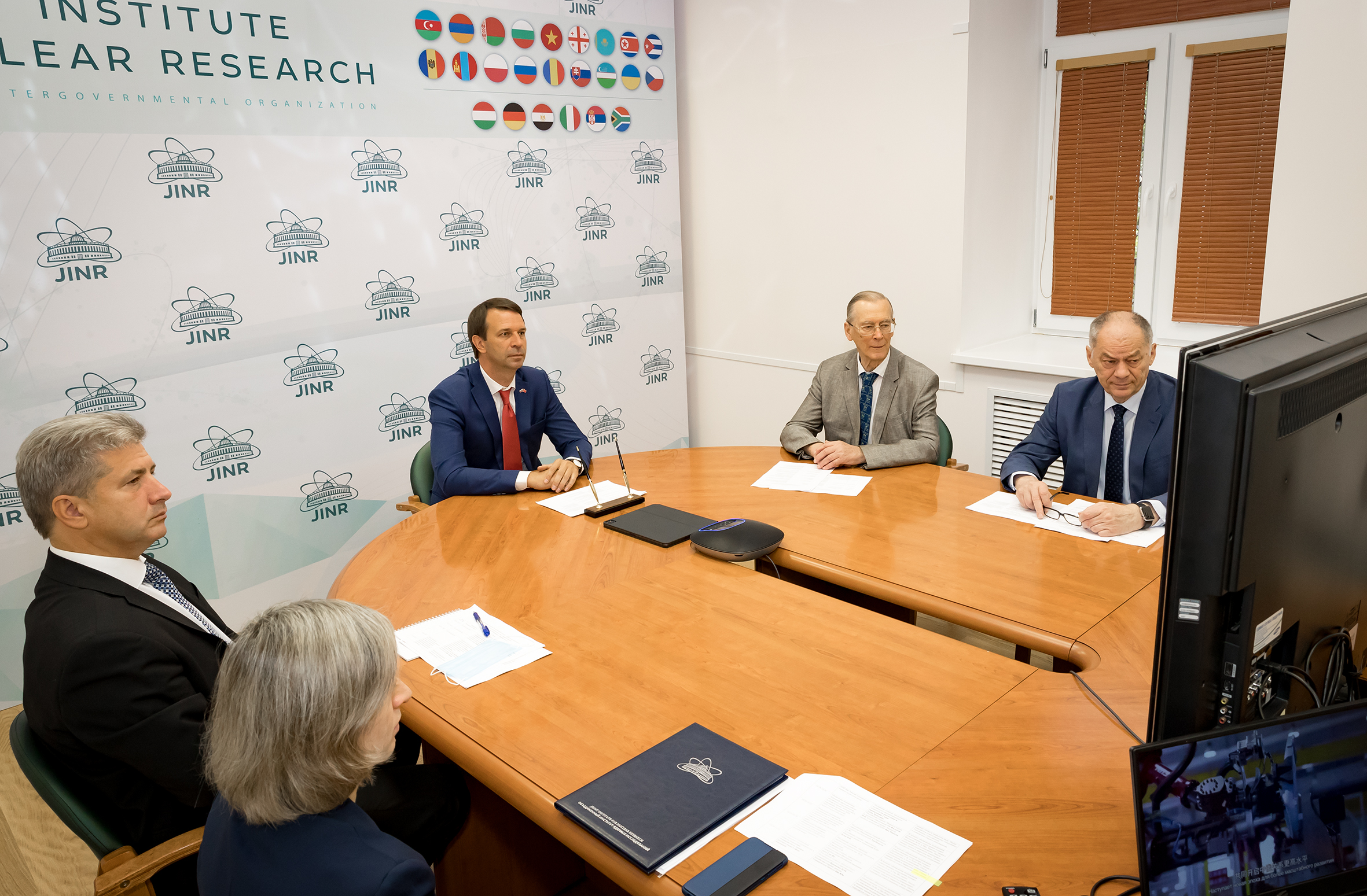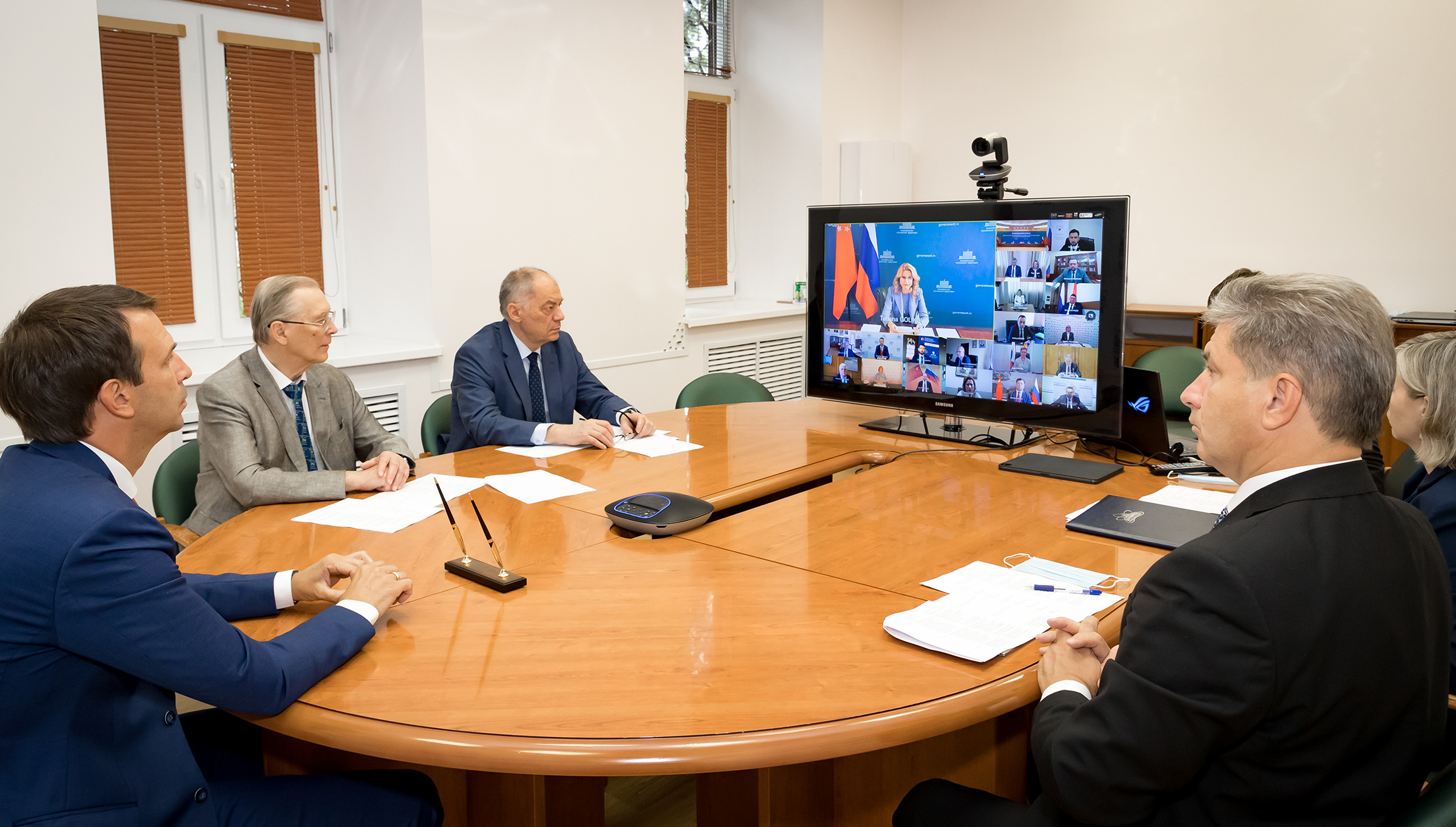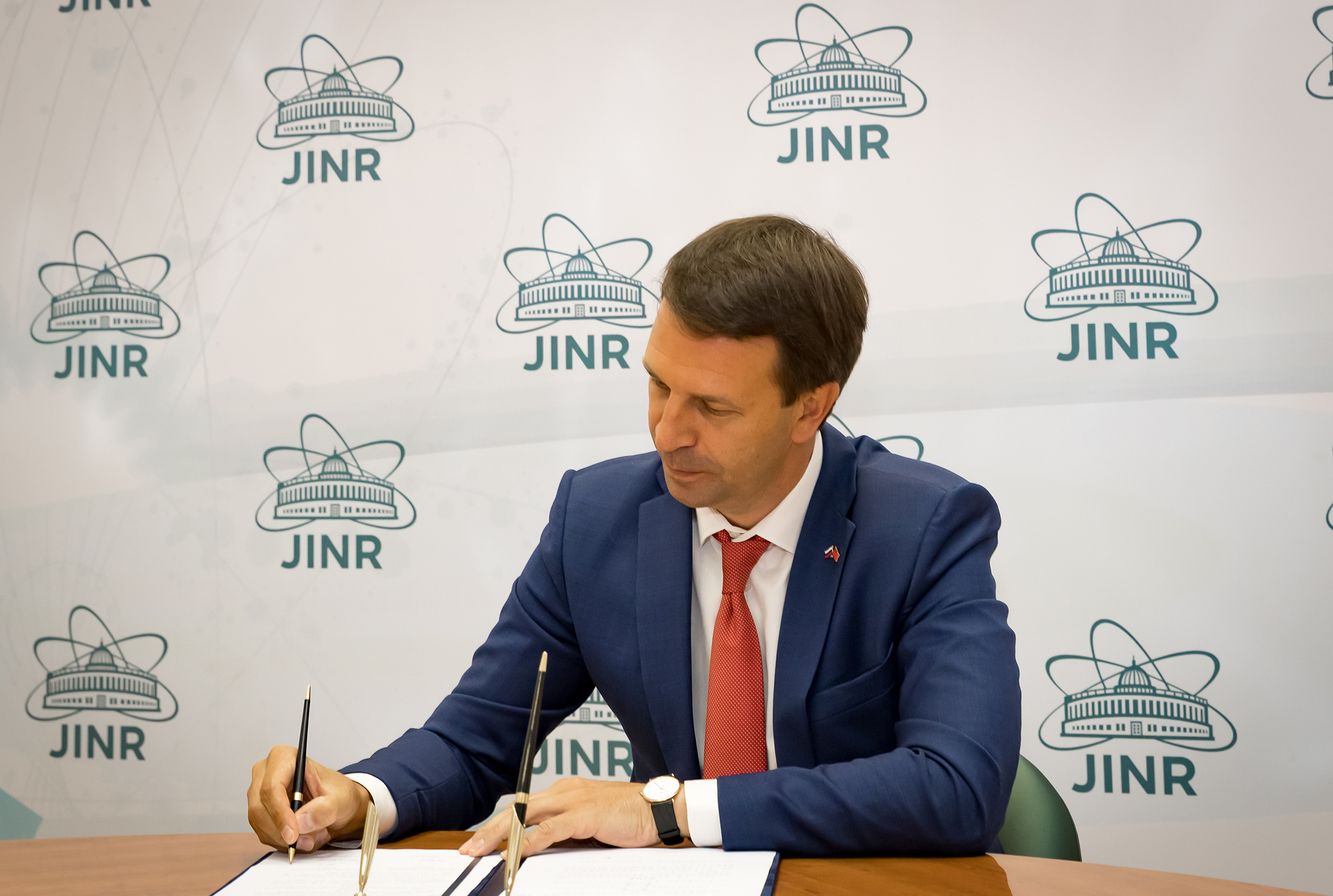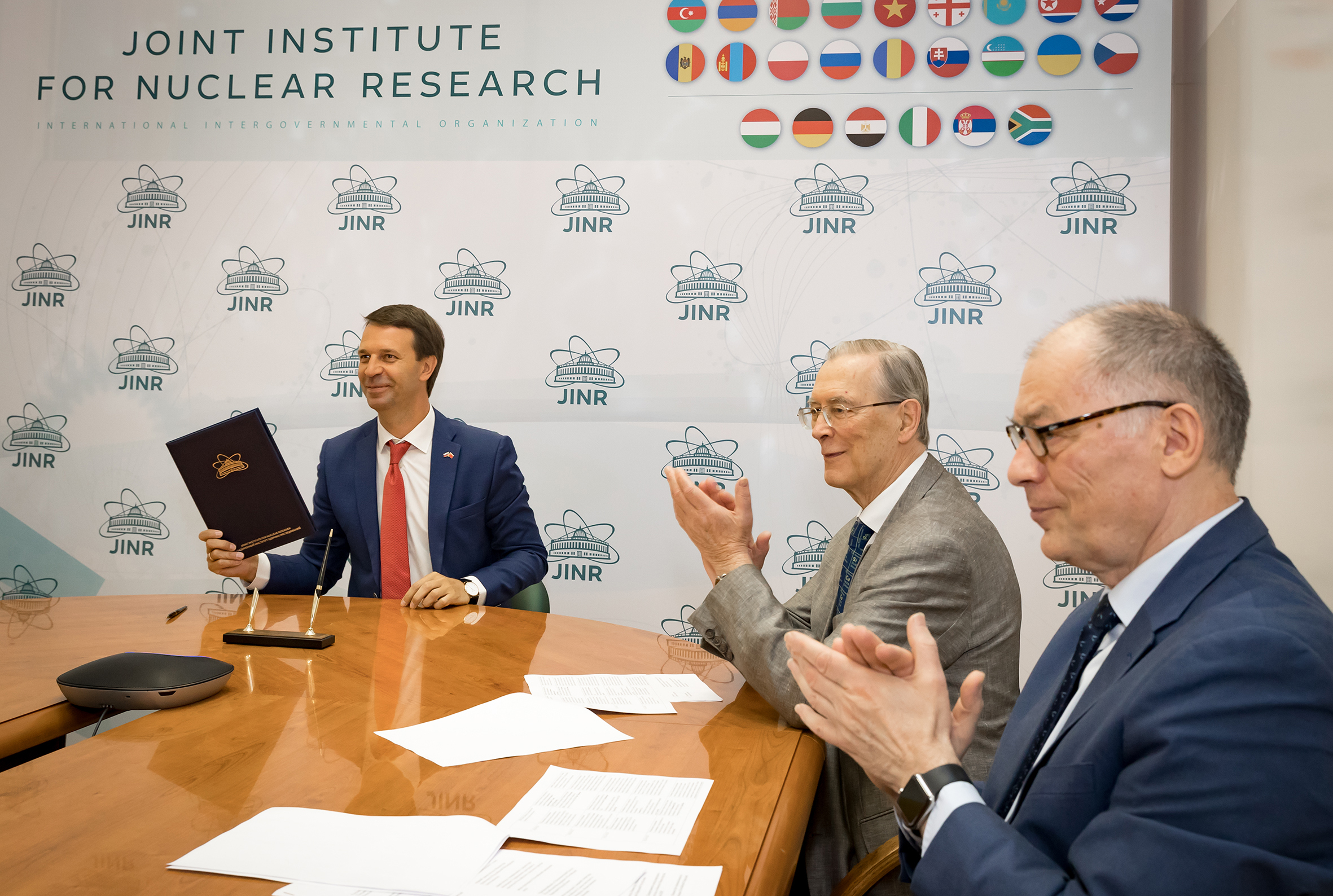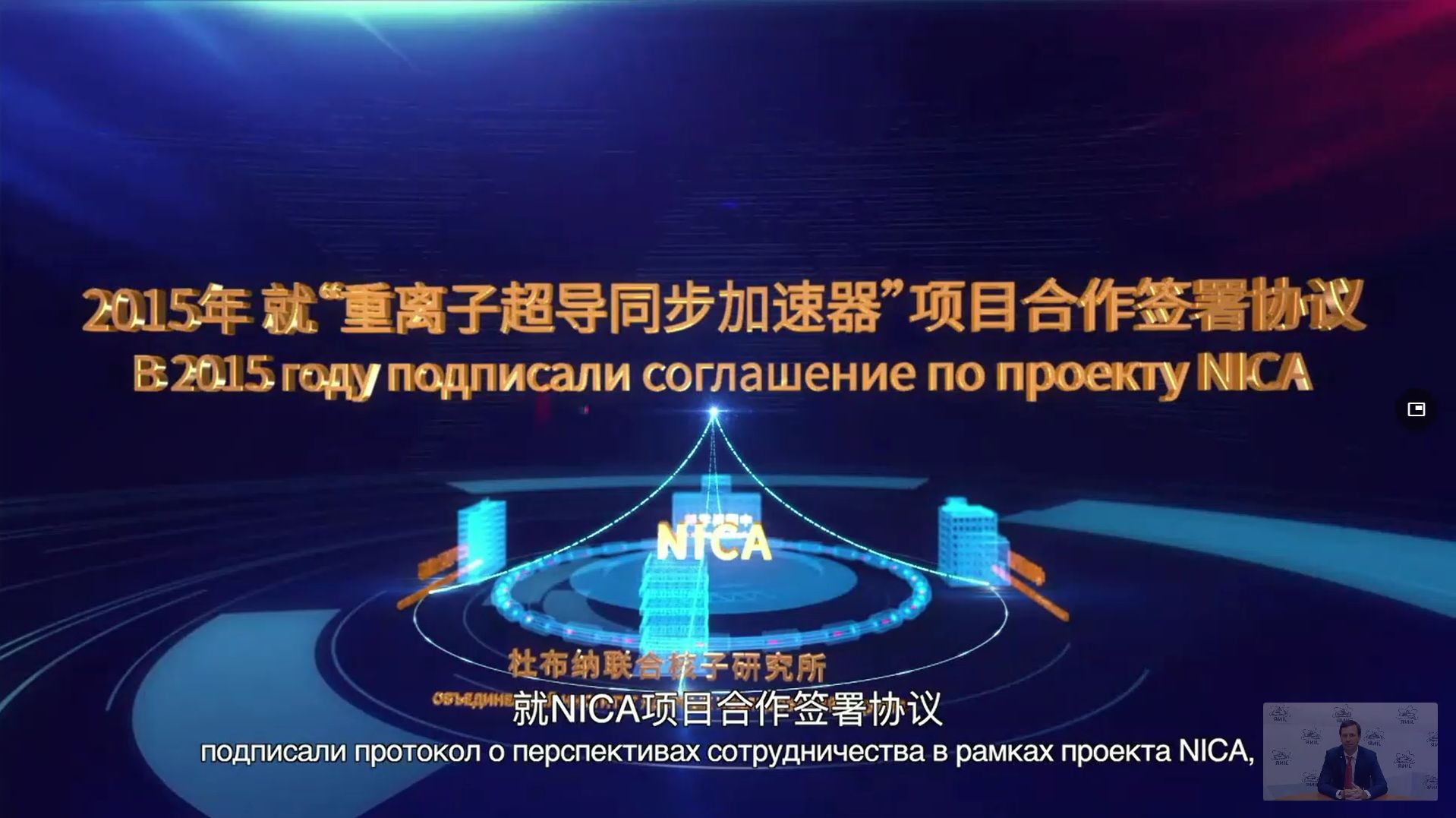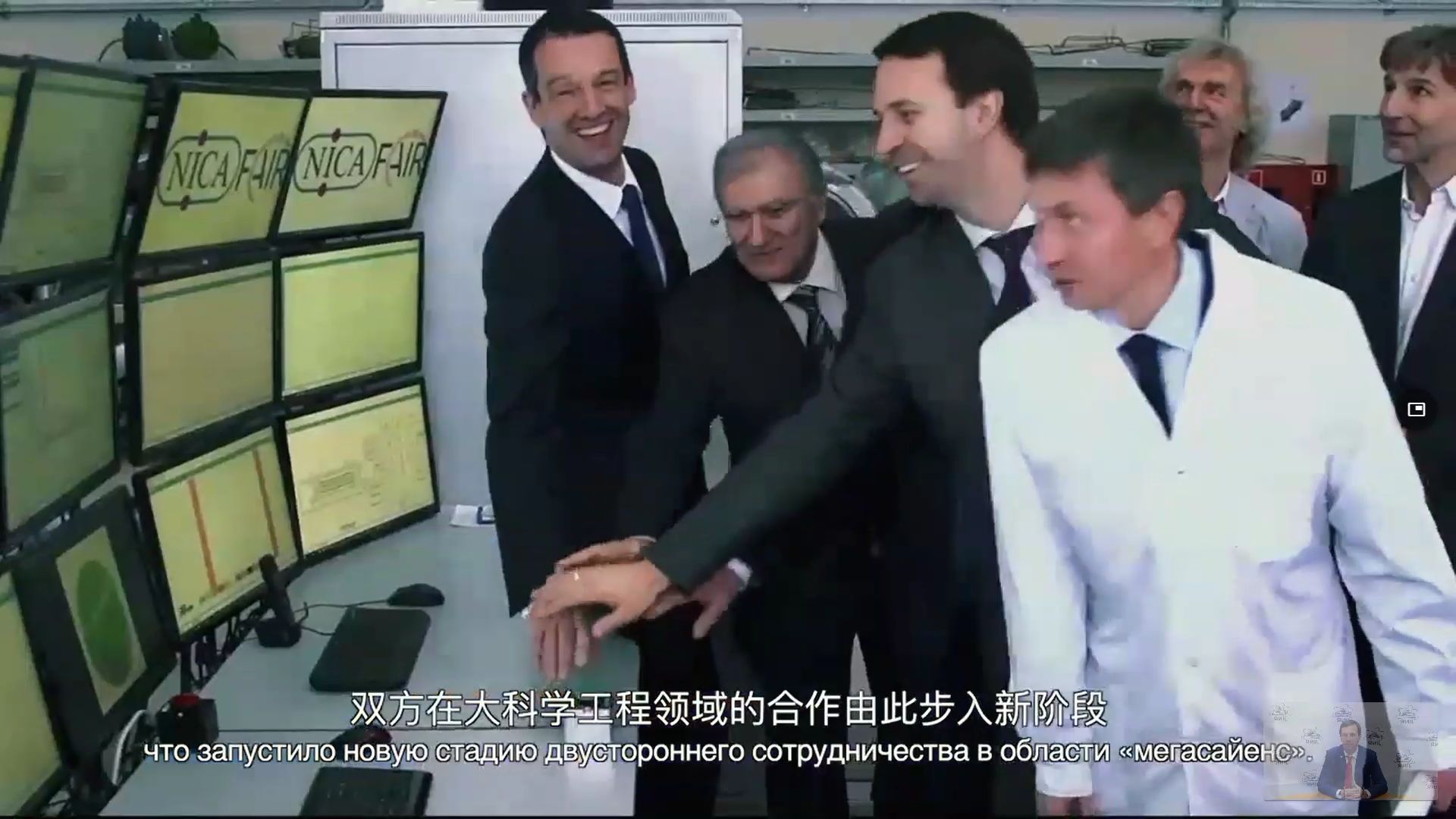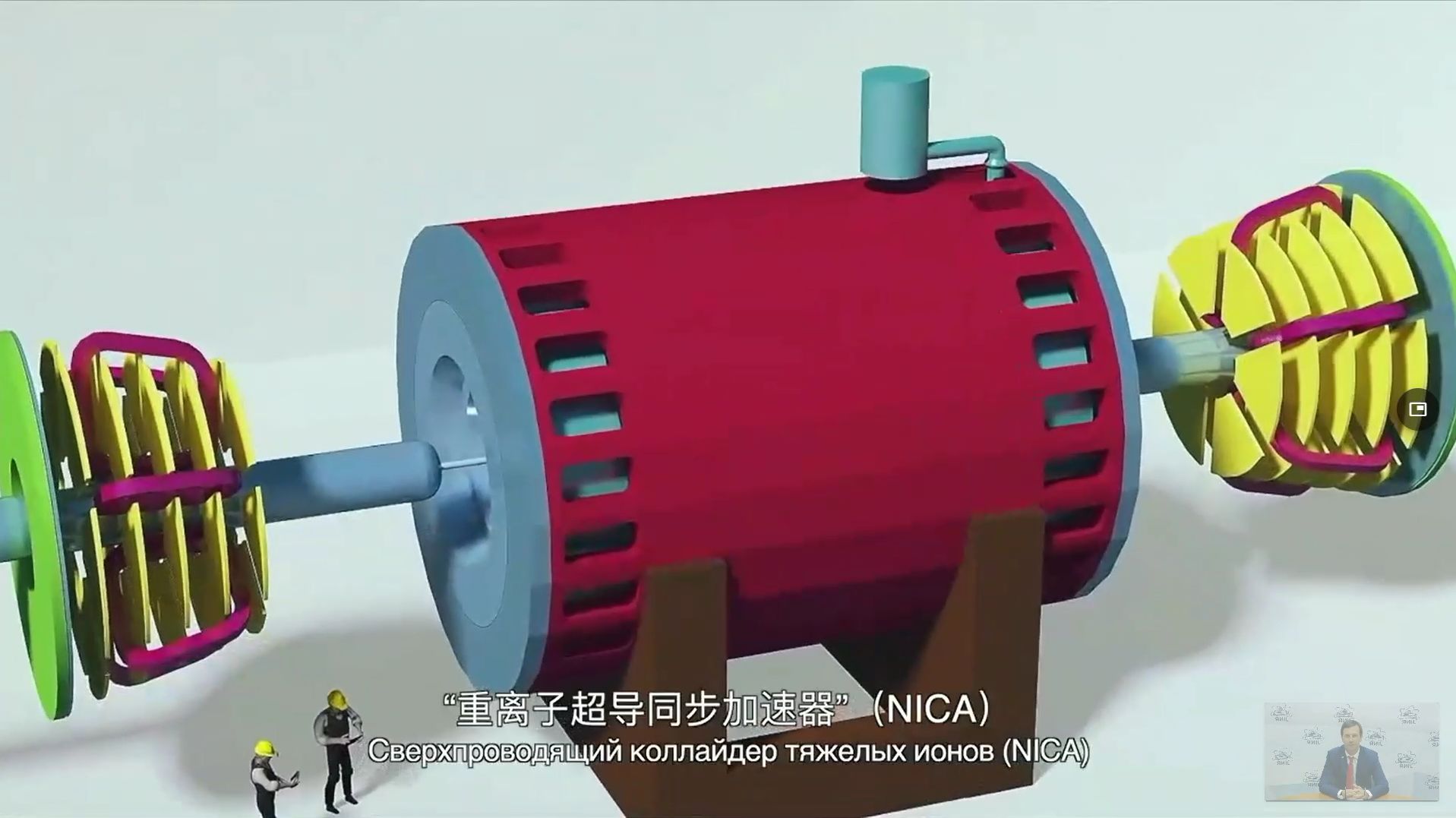JINR and China signed agreement on NICA project implementation
News, 26 August 2020
On 26 August 2020, a JINR delegation took part in a solemn opening ceremony of the Years of Russian-Chinese Cooperation in Science, Technology, and Innovation scheduled for 2020 and 2021. JINR First Vice-Director G. V. Trubnikov represented JINR at the official ceremony held as a video conference. JINR Director V. A. Matveev, Leader of the NICA mega-science project and JINR Vice-Director V. D. Kekelidze, as well as Head of the International Cooperation Department D. V. Kamanin were present in the video conference hall in the JINR Directorate as observers of the event.
An Agreement between the Ministry of Science and Technology of the People’s Republic of China and the Joint Institute for Nuclear Research was signed at the event on the participation of China in the construction and operation of the complex of superconducting rings for heavy-ion colliding beams NICA, a JINR flagship project. Vice-Minister of Science and Technology of the People’s Republic of China Huang Wei and JINR First Vice-Director G. V. Trubnikov signed the agreement in a solemn ceremony.
The Agreement aims to strengthen cooperation between JINR and the People’s Republic of China in the fields of fundamental scientific and applied research. According to the heads of the Agreement, the parties have agreed to establish a bilateral coordinating committee (BCC) with an equal number of representatives of the parties. The BCC guided by the decisions of the supreme governing and control body of the project, namely the International Supervisory Board of the NICA project, shall be responsible for the resolution of technical and financial issues related to the participation of Chinese scientific organizations in the construction and operation of the NICA complex the launch of which is scheduled for 2023.
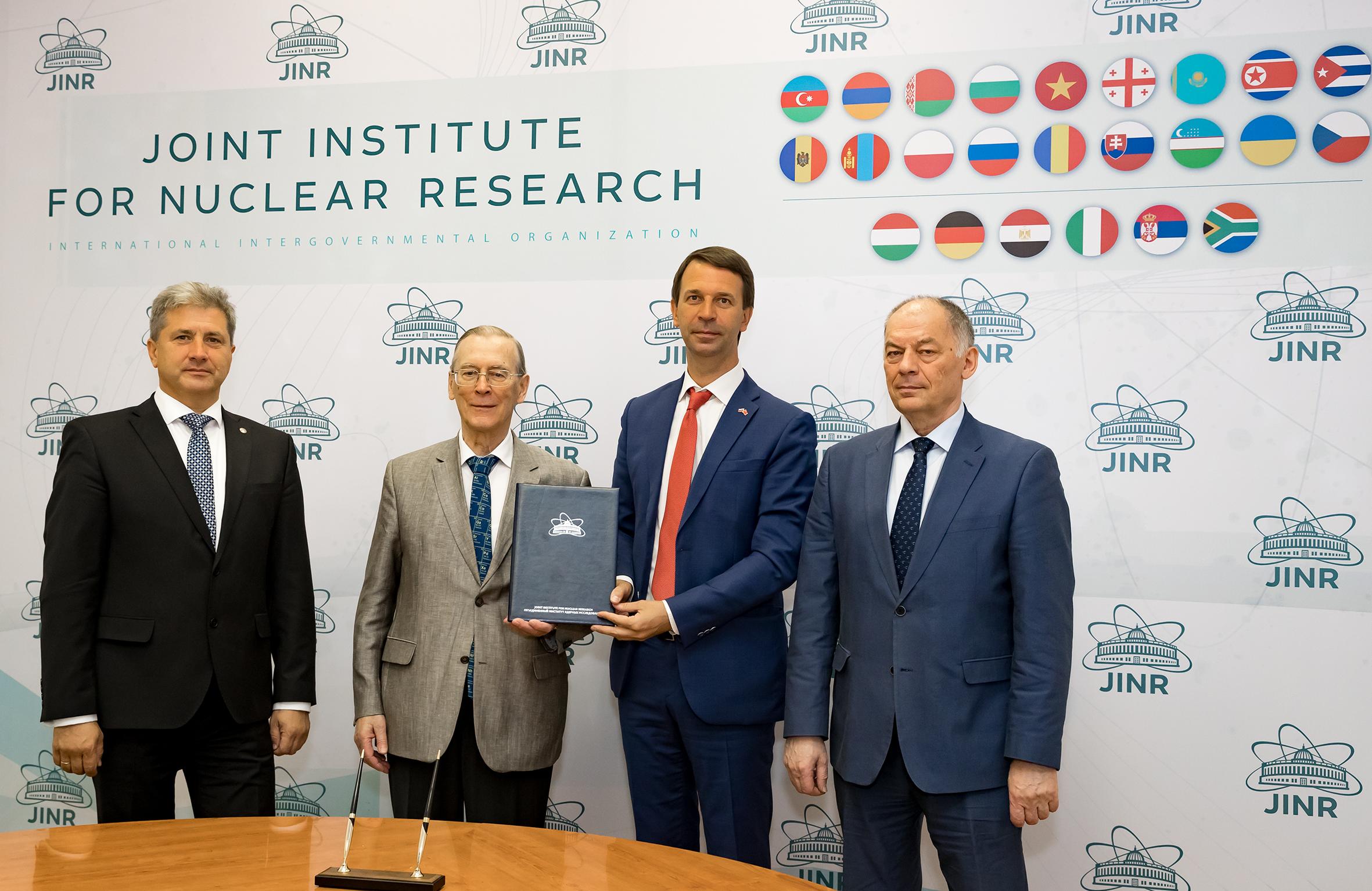 Photos by Elena Puzynina, JINR
Photos by Elena Puzynina, JINR
The signed Agreement is the result of the cooperation development based on the quadripartite Protocol signed in 2015 by the Ministry of Science and Technology of the People’s Republic of China, the Ministry of Education and Science of the Russian Federation, the Chinese Academy of Sciences and the Joint Institute for Nuclear Research. On behalf of JINR, the Protocol was signed by G. V. Trubnikov, who initiated cooperation with China at such a high level and took the lead in the entire seven-year preparation which was successfully marked by the present Agreement. The Agreement was drafted by the Russian-Chinese Working Group on implementation of the NICA project in the frames of the meetings of the working group for high technologies and innovations of the Russian-Chinese sub-commission for cooperation in science and technology.
The Agreement was signed in the presence of high-ranking participants of the solemn opening ceremony of the Years at which Deputy Prime Minister of the Russian Government Tatyana Golikova headed the Russian party and Vice-Premier of the State Council of China Sun Chunlan headed the Chinese party. On behalf of the Russian Federation and the People’s Republic of China, the event was also attended by representatives of the cabinet, governments, administrative bodies, heads of academies of sciences, public and scientific organizations, agencies and foundations, as well as diplomatic representatives of the two countries.
During the opening ceremony of the Years, a Roadmap for Russian-Chinese cooperation in science, technology, and innovation for 2020 – 2025 was also signed. The document was signed by Minister of Science and Higher Education of the Russian Federation Valery Falkov and by Minister of Science and Technology of the People’s Republic of China Wang Zhigang. The intentions of the parties to support cooperation in the frames of the Joint Institute for Nuclear Research is also reflected in this document.
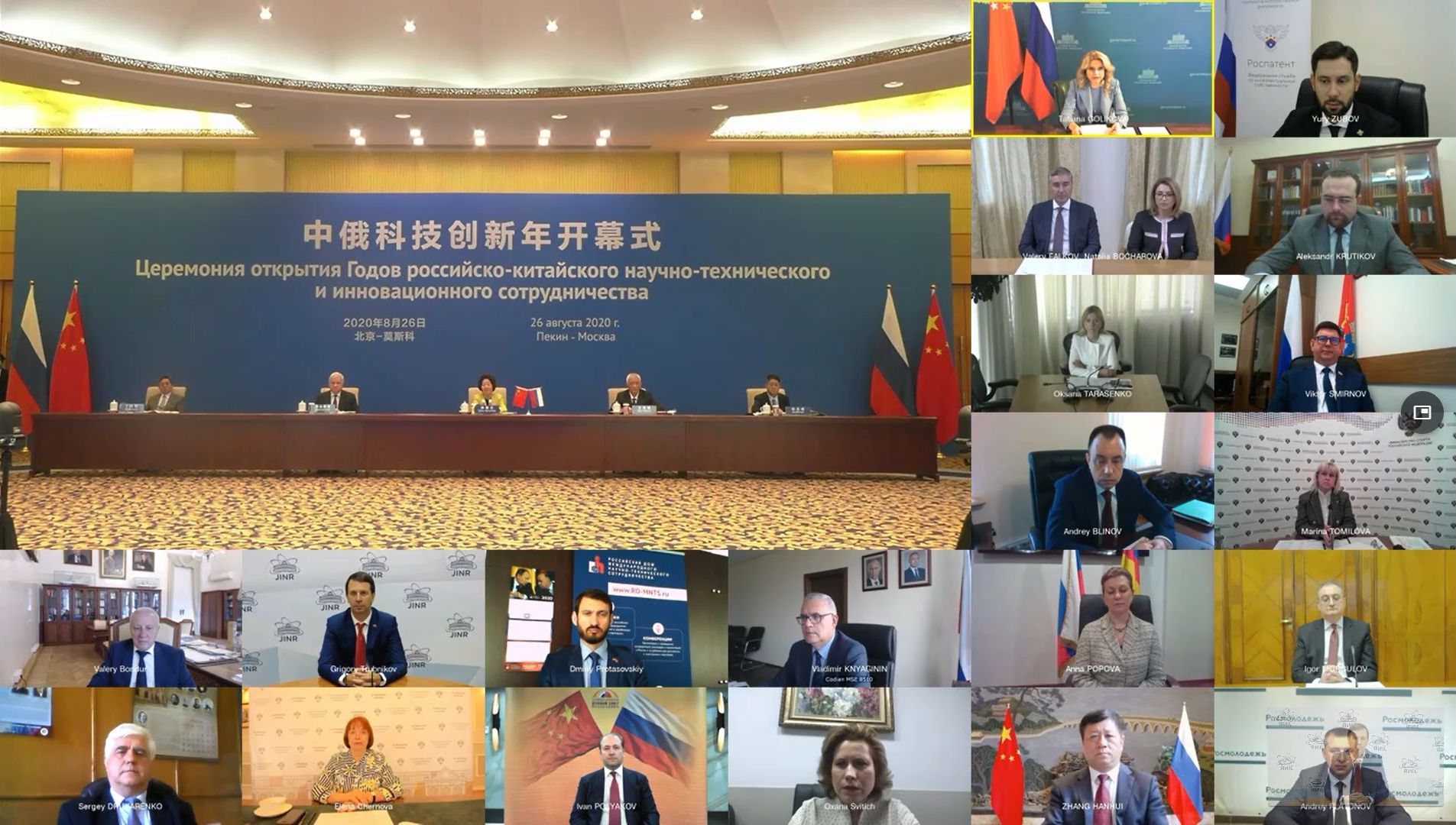 The solemn opening ceremony of the Years of Russian-Chinese Scientific, Technical and Innovation Cooperation via video conference
The solemn opening ceremony of the Years of Russian-Chinese Scientific, Technical and Innovation Cooperation via video conference
Footage from a video about Russian-Chinese cooperation in science, technology, and innovation shown at the opening ceremony
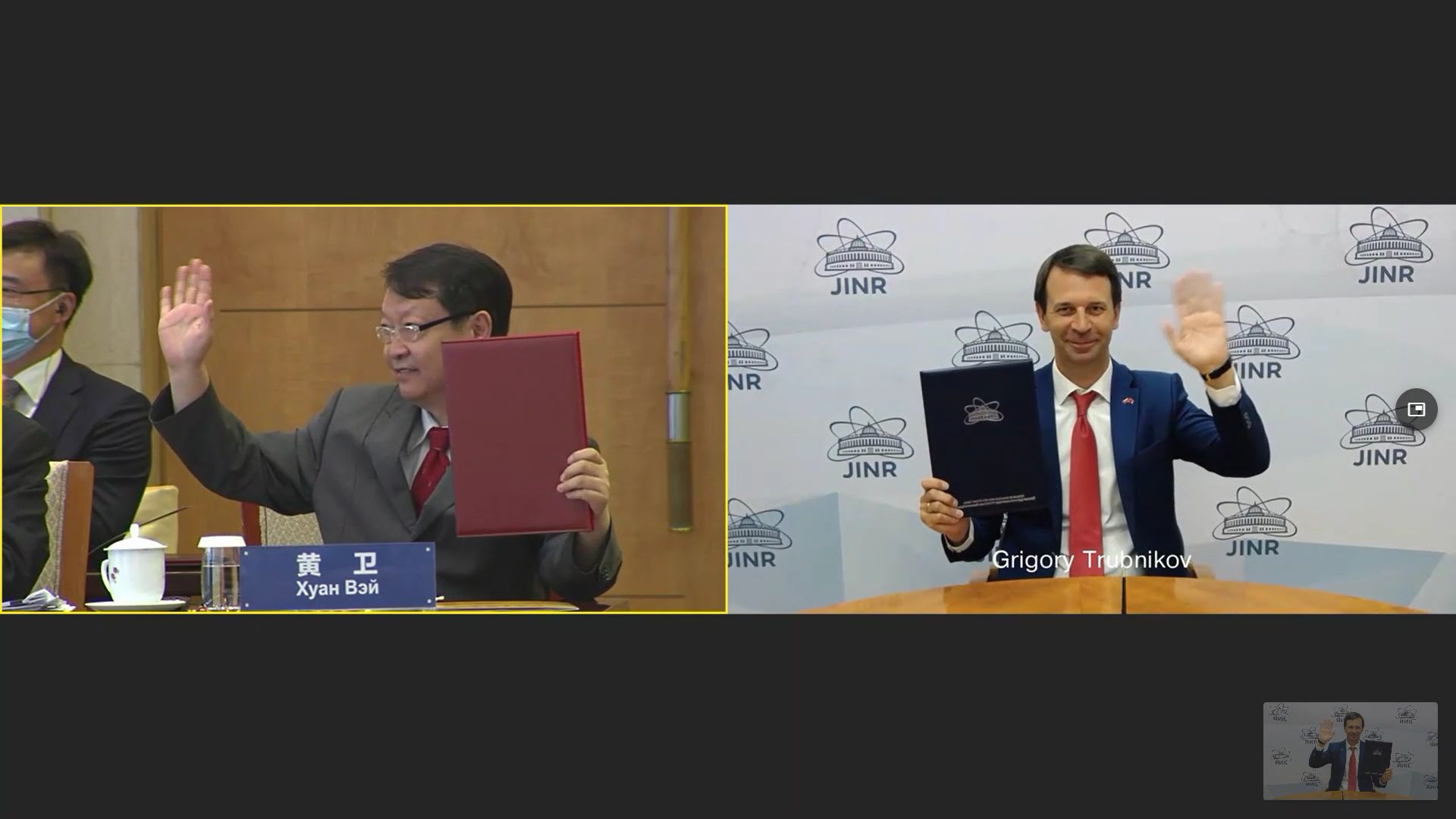 The Agreement between the Ministry of Science and Technology of the People’s Republic of China and JINR is signed
The Agreement between the Ministry of Science and Technology of the People’s Republic of China and JINR is signed
JINR leaders shared their comments with the Institute’s mass media on the signing of the Agreement, which is of particular importance for both the NICA project and the Joint Institute at large.
JINR Director V. A. Matveev: “Today’s signing of the Agreement on the participation of our Joint Institute for Nuclear Research together with the People’s Republic of China in the implementation of the unique project NICA is a historic moment for us. It is important that the signing took place in the frames of the opening ceremony of the Years of Russian-Chinese Cooperation in Science, Technology, and Innovation which demonstrates the place of our flagship project NICA in the overall context of Russia-China cooperation.”
JINR Vice-Director and Leader of the NICA Project V. D. Kekelidze spoke about the current and future tasks of the NICA project with the participation of our Chinese colleagues: “The Agreement implies active participation of our Chinese colleagues in joint tasks in the frames of the NICA project, which even slightly goes beyond this project. First of all, China’s participation in the creation of electromagnetic calorimeter for our basic detector MPD is very important for us. Its scales make it impossible to implement this task by efforts of only one Institute. We are grateful to our Chinese colleagues for their response to our call, that they actively participate in the implementation. The next joint task is the development of the modern detector subsystems. We are talking about a so-called MAPS technology (Monolithic Active Pixel Sensors), which is at the forefront of detector technologies in the fields of high energy physics; it is a technology that has not been used at any operating facility yet. Moreover, Chinese colleagues will join the development of electronics for our detectors. Chinese representatives already take part in the data analysis, modelling and, of course, will be actively engaged in our analysis programmes. There can hardly be an excess of human resources and intellectual strengths; there is always a lack of these things. Therefore, we always welcome extensive involvement of some Chinese universities as participants of the NICA project. Basing on the technologies developed and used in NICA, work on some innovation projects is also planned. In particular, it regards a superconducting energy storage device which is considered the technology of the future and a breakthrough in the modern power supply industry. And finally, medical technologies are the field in which we and our Chinese colleagues are already partners, and we see great prospects for joint work.”
In his speech, JINR First Vice-Director G. V. Trubnikov noted the following, in particular: “In my opinion, signing of such an agreement has happened fairly quickly for JINR-China relation, taking into account the large scales of China as a country and of JINR as an organization with 18 Member States. Just in five years, we have achieved a high-quality leap from intentions to particular steps and actions. A significant document has been signed that actually makes China and its scientific organizations of the Ministry of Science and Technology of the People’s Republic of China, full members of the creation and further operation of the NICA project. In this regard, the most important thing, apart from the political decision, is that real organizations, real people join the project. We are very grateful to our Chinese partners, namely the Institute of Plasma Physics in Hefei, Tsinghua University, the Institute of Modern Physics in Lanzhou, Beijing University, and, of course, employees of international departments of the Ministry of Science and Higher Education of the Russian Federation and the Ministry of Science and Technology of the People’s Republic of China. We would not have achieved the victory, which we have documented today, without their help and their efforts. I would like to highlight the very important and ideological role of Academician Vladimir Kadyshevsky, who was one of the apologists for strengthening and developing relations with China. And of course, I wish to pay tribute to the support of our Director academician Victor Matveev who supported our initiative with China which was one of the Institute’s priorities in attracting new countries. On the Chinese side, there were also two key figures whose role must be noted. This is Professor Jiangang Li, former Director of the Institute of Plasma Physics in Hefei, actual Vice-President of the Chinese Academy of Engineering. And another person who promoted this project and our cooperation is Cao Jianlin, the former Deputy Minister of Science and Technology of China, Director of the Institute of Laser Physics now, one of the largest institutes in Beijing. And I also thankfully mention today the role of our International Cooperation Department that put this task as its first priority. Of course, the key role in establishing direct working contacts and filling this initially political project with real science belongs to my colleagues from the Laboratory of High Energy Physics of JINR. I cannot but mention here Hamlet Georgievich Khodzhibagiyan and Viacheslav Mikhailovich Golovatyuk. Altogether, by joint efforts, we have made several significant steps on this long one-mile way at the end of which we would like to see China a full Member of JINR.”
